Winnipeg: Museum of Human Rights
If you've ever been to Winnipeg, you know that one building in the downtown skyline--the Museum of Human Rights--stands out among others.
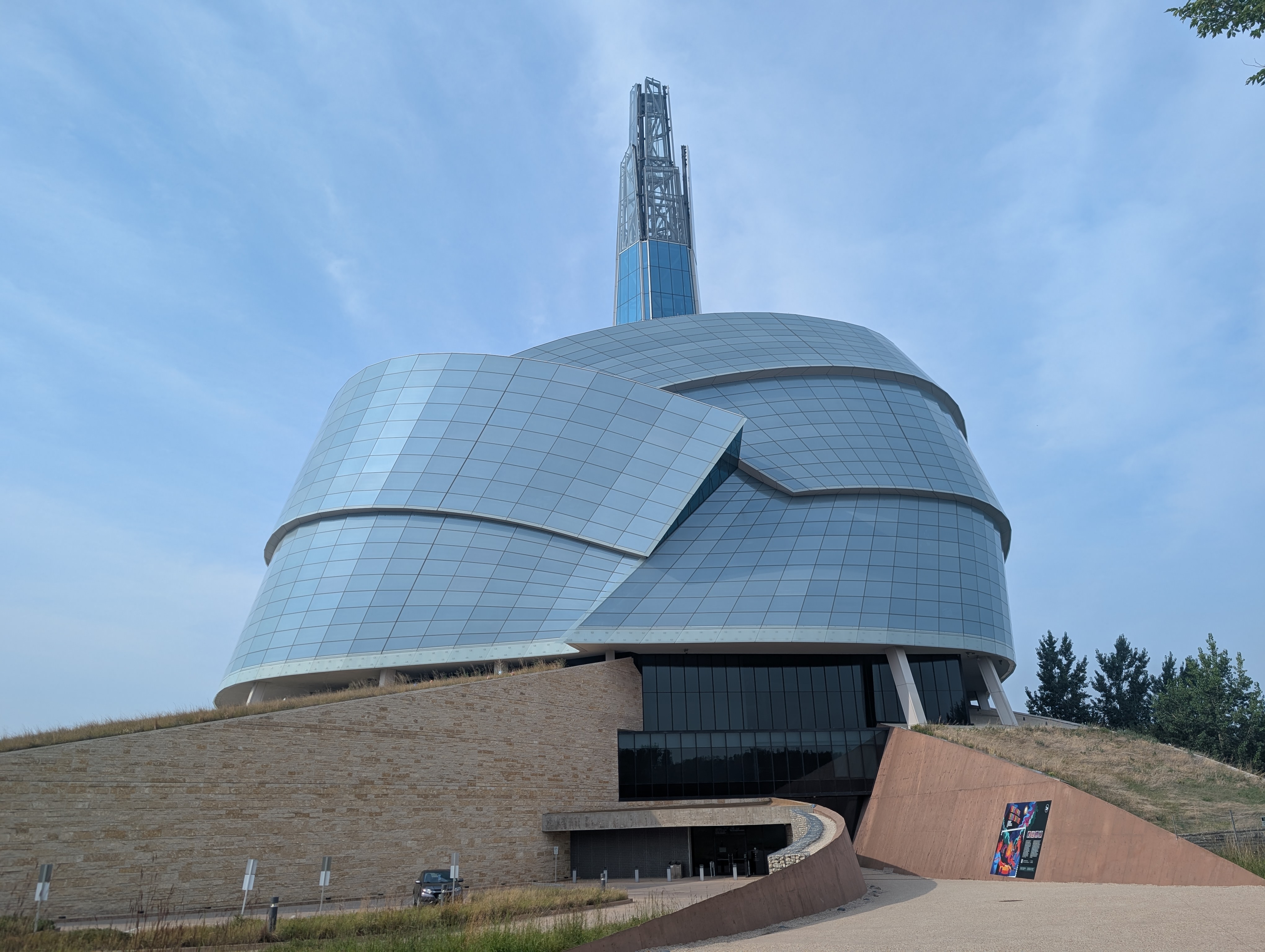
This is a radical departure from the usual blocky high-modern designs of Canadian downtowns. The lines of the building flow and contrast against each other in novel ways with each different angle you look at it, and the forms of the rooms and halls are constantly shifting as you spiral up the building to the glass lookout tower at the top.
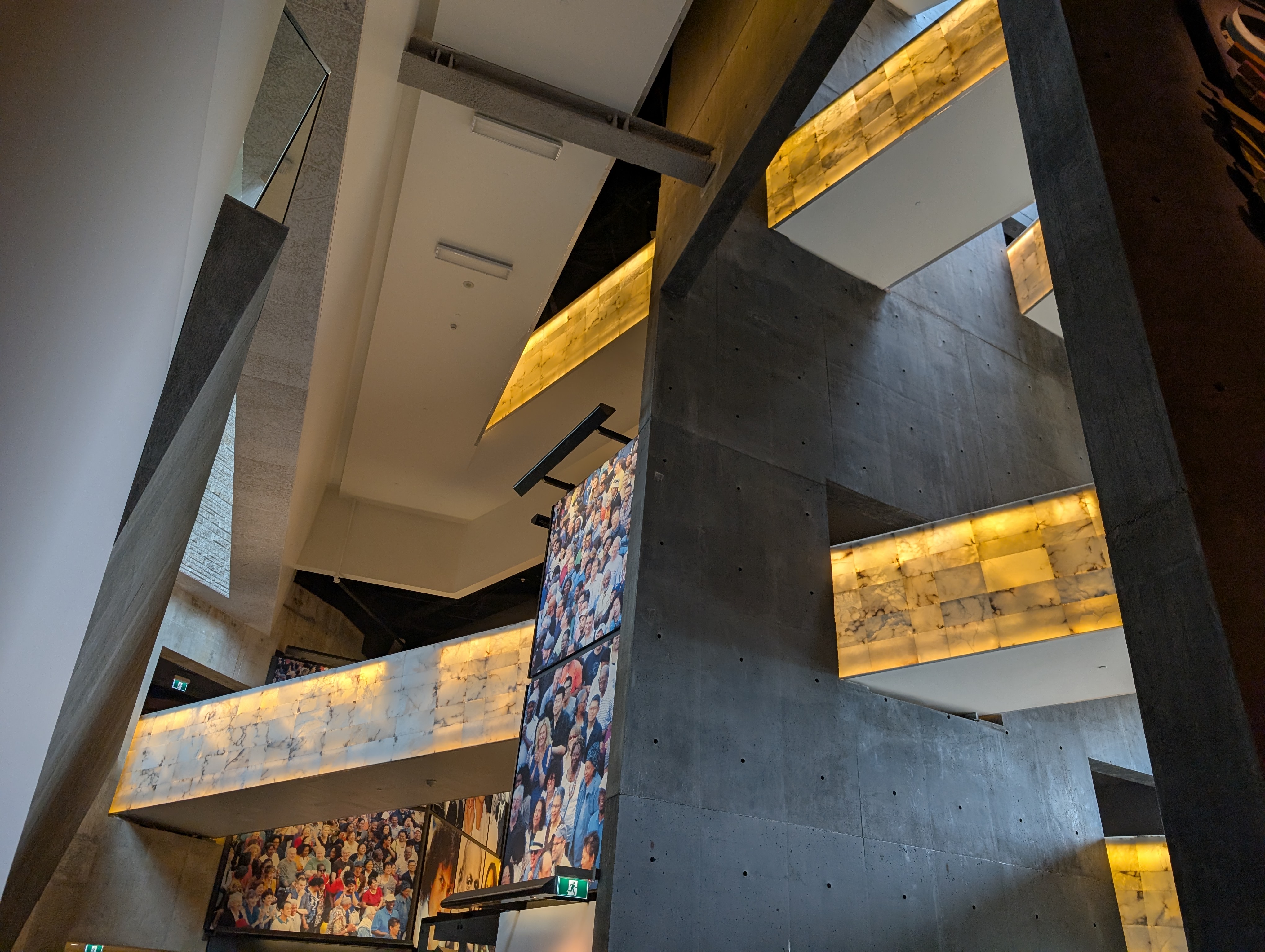
For lack of a better term, I would describe this building as a living painting. It is remarkable how much simple beauty and ingenuity is packed into the spiral design of this building. Is it practical? No. Is it modest? Not really. But it is stunning for sure.
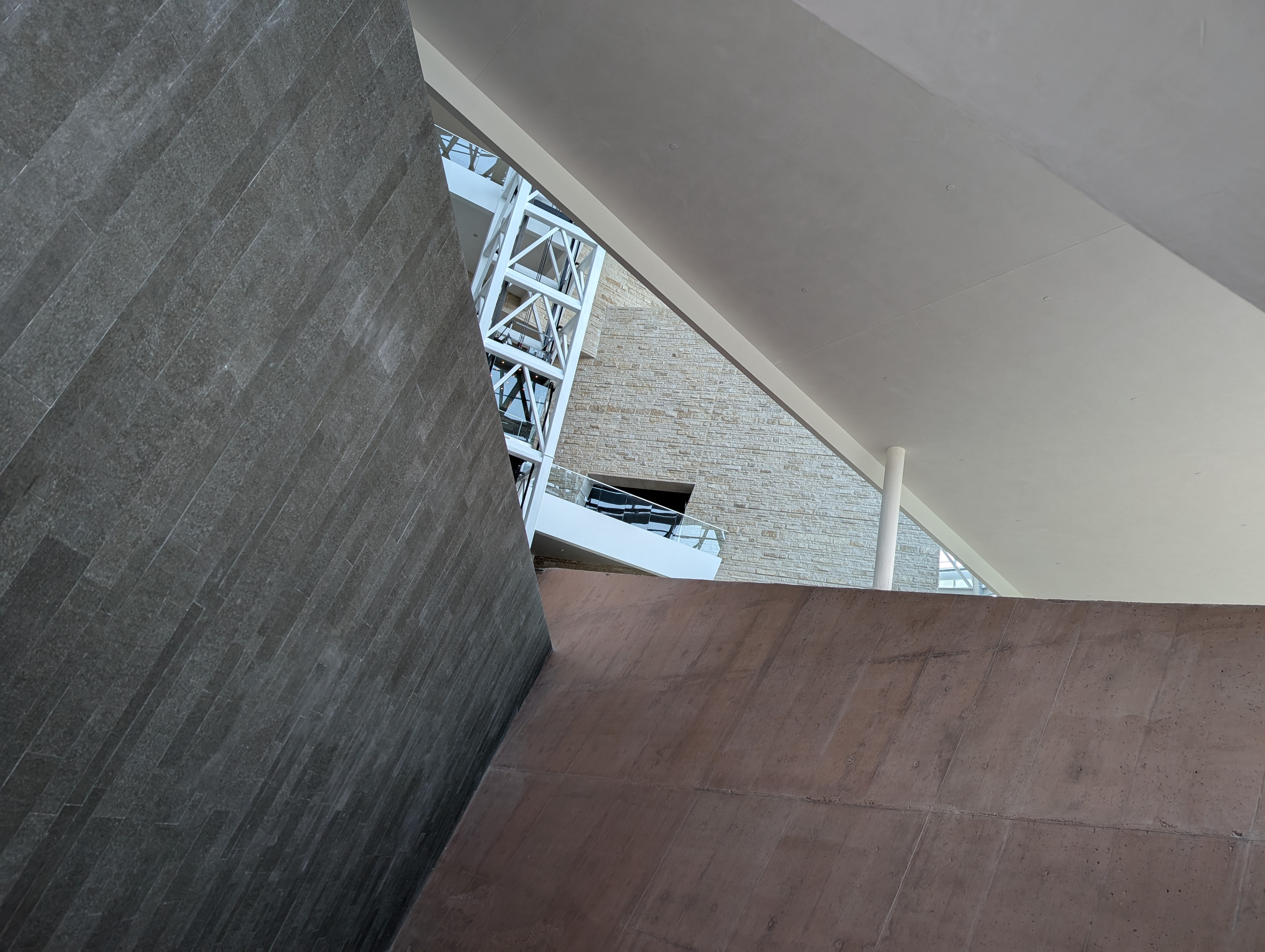
The museum itself is also very artfully done, with exhibits exploring perspectives on human rights across the globe and throughout history. If we, as a society, are going to continue improving our world, this is a topic that everyone must understand and work towards. So it is beautiful to see such a bold statement on the subject. It really is remarkably well done and I have great respect for the visionaries who put this building together.
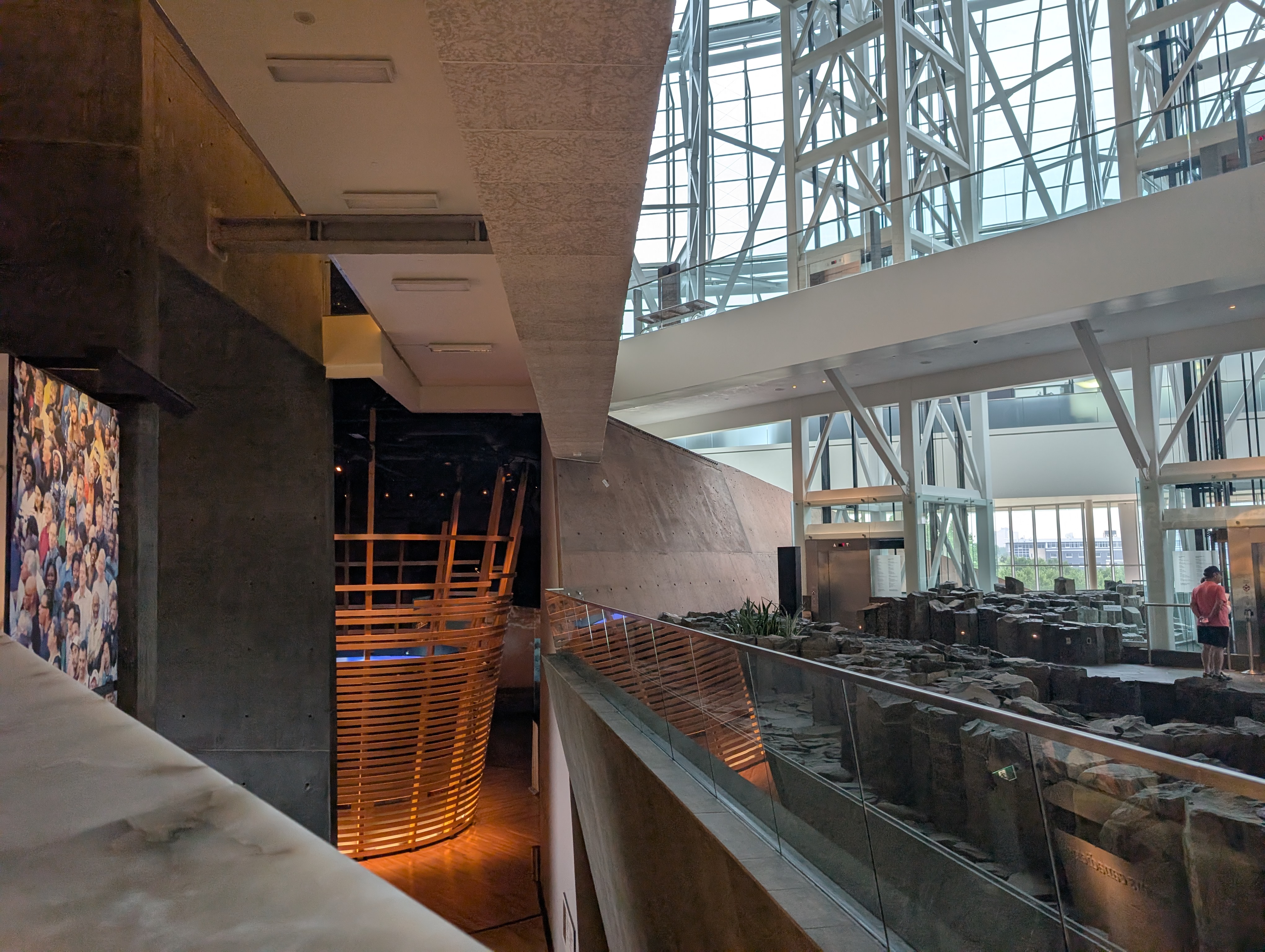
The museum opened in 2014 and was designed by late New Mexican architect Antoine Predock. The building has a jagged, but flowing, brutalism that seems inspired by the shapes and forms of nature.
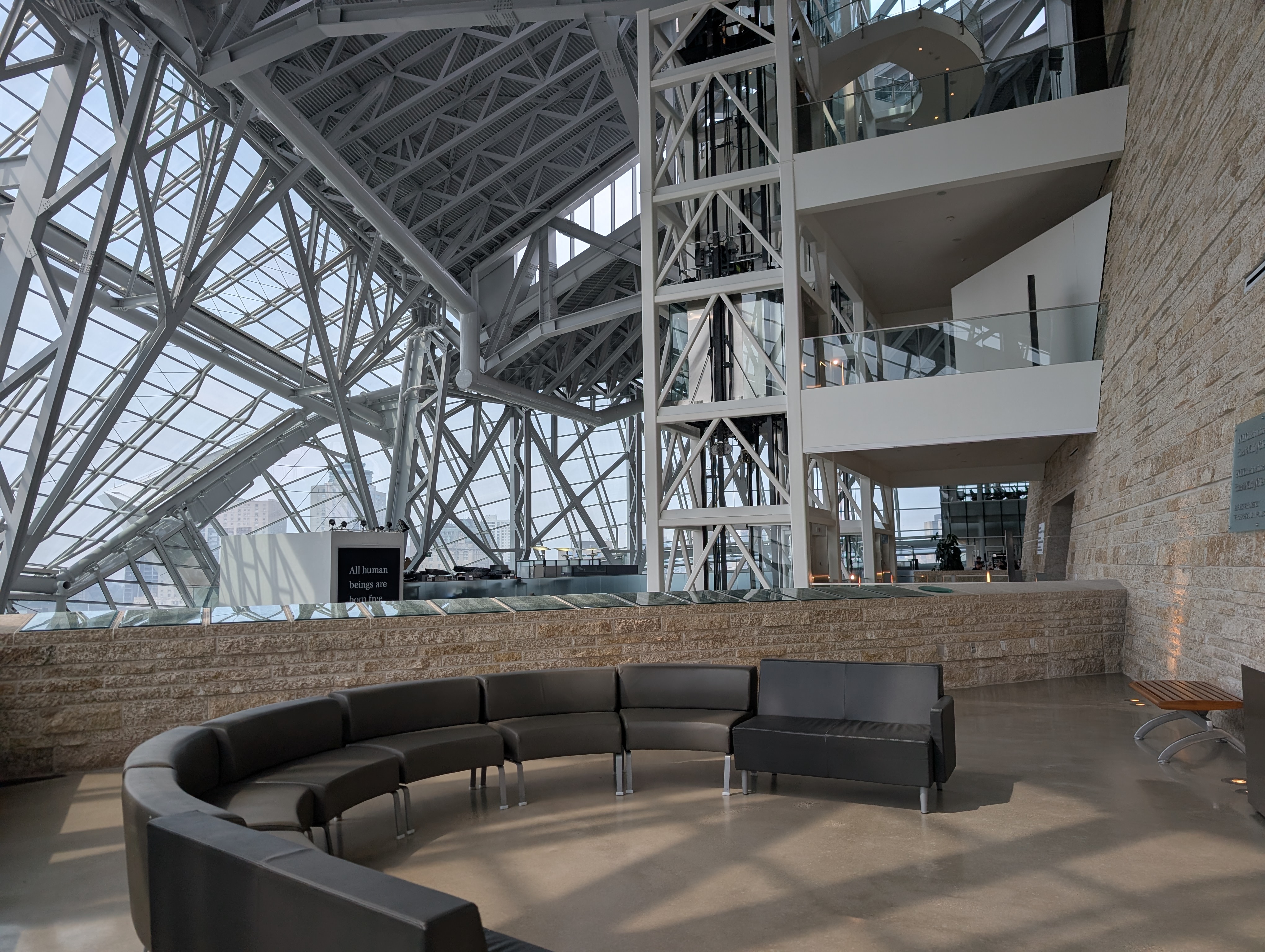
It is, in short, quite something.
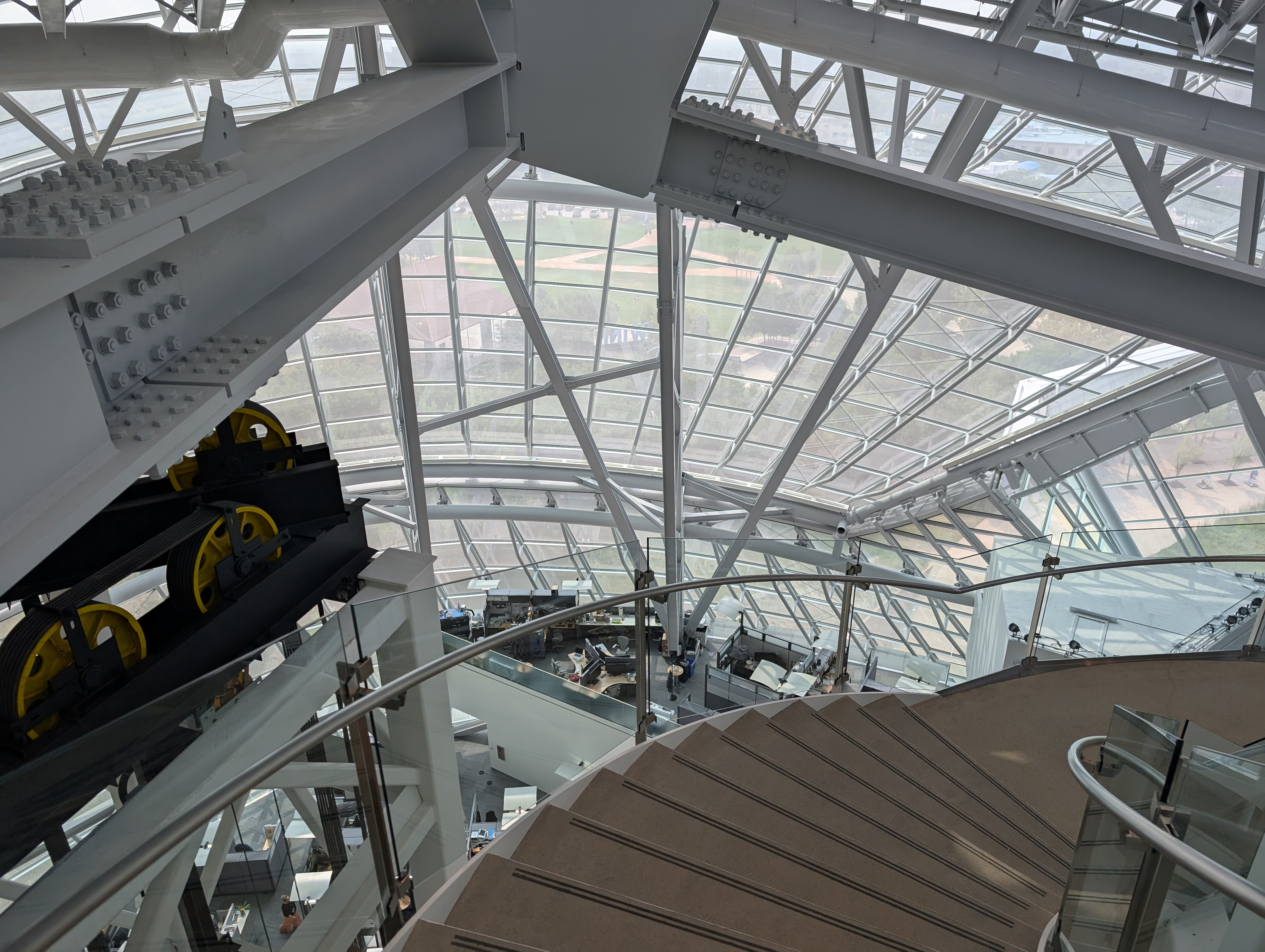
Was it worth the 351-million dollars the Canadian government spent on this and the surrounding Forks historical site? No doubt this project has its detractors, but I would say yes. From Winnipeg's modern inception as a hub for commerce and transport, the Canadian railways have always had a major influence on the city. Because of this, the mainline track travels straight through downtown, creating a permanent belt of ugly industrial land right in the heart of the city. This, and the relative fall in fortunes of the city since WWII, has contributed to a declining downtown area, and this neighborhood that was once vital and prosperous now seems decrepit. As vacant historic buildings have fallen into disuse and have been demolished, more and more of the downtown is covered in surface parking, giving a somewhat stark and uninviting appearance to the surrounding area, and no doubt bringing crime and other forms of urban blight along with it. This revitalization project was focused on creating a welcoming and interesting place for the people of Winnipeg to mix and mingle. I am not a local, but from what I can see, the project is already paying dividends. There is plenty to see and do, and it really feels like a place that everyone can enjoy.
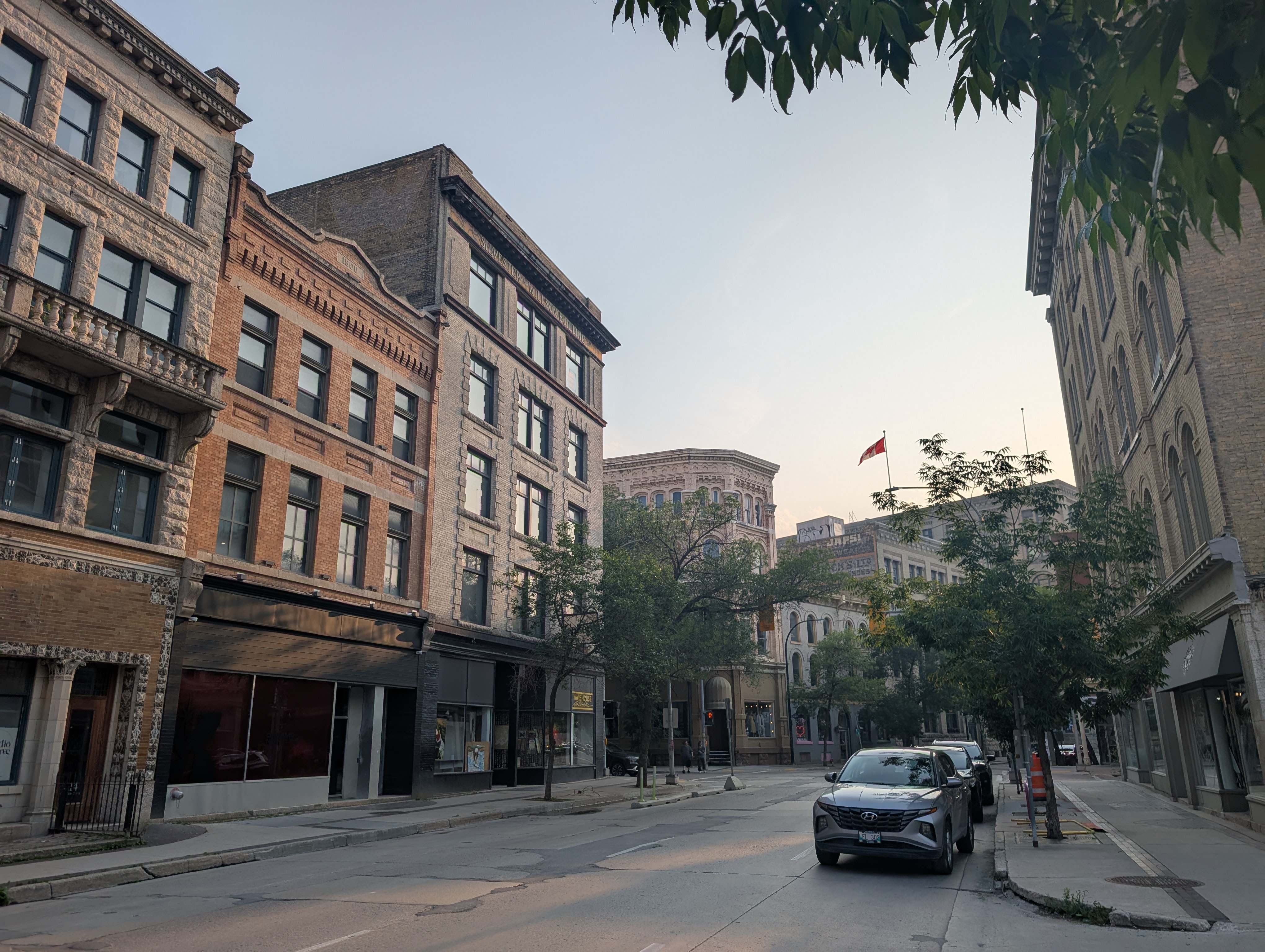 Winnipeg's Exchange District
Winnipeg's Exchange DistrictDid it fix Winnipeg's downtown? Not quite, I think many more hundreds of millions are required if Winnipeg is going to regain the vibrant downtown it once had and restore its aging infrastructure. Like all major Canadian cities right now the visible homelessness and addiction on the streets are impossible to miss. But the bones of a great city are still there, and if ever Winnipeg can regain some of its economic dynamism, there seems like a lot to be optimistic about for this prairie city.
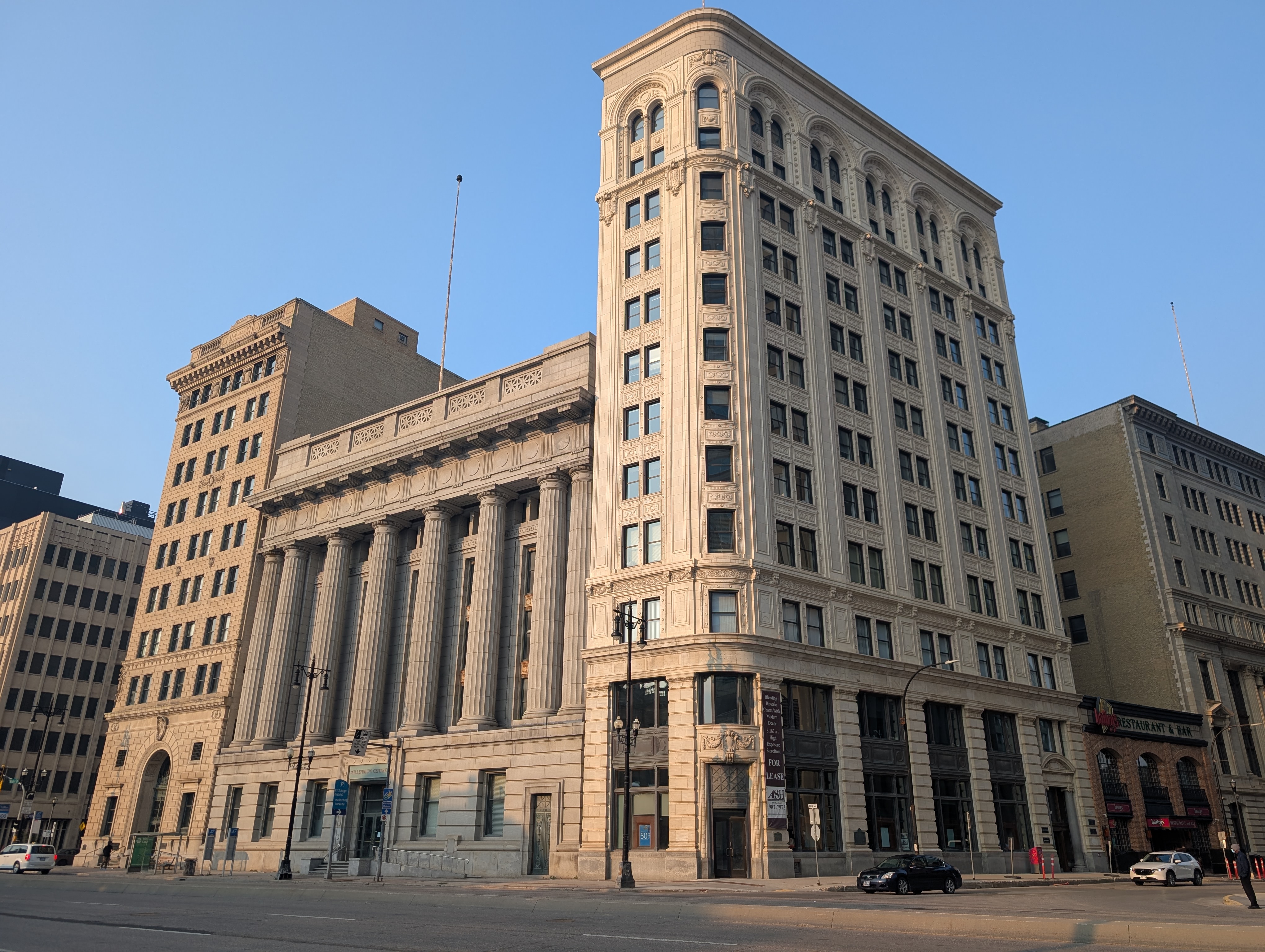 Neoclassical grandeur along Portage
Neoclassical grandeur along Portage